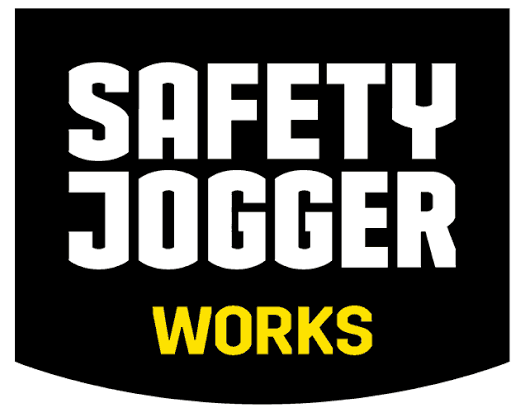Certified standards for safety footwear There are 2 MAIN STANDARDS for safety footwear: ASTM 2413 & EN ISO 20345. Besides these 2 main standards, Safety Jogger pays attention to other safety footwear standards as well (AS/NZS, JIS, LA, SNI, SIRIM, GOST, OHSC) but they are generally based on ASTM & ISO, which are explained below. ASTM 2413 - 17 The American Society for Testing and Materials (ASTM) is an international standards organization that develops and publishes voluntary consensus technical standards or certifications. ASTM announced in 2005 that their ANSI Standard was withdrawn and replaced by two new ASTM standards, titled F2413 Standard for Performance Requirements and F2412 Standard for Foot Protection Test Methods. These new safety footwear standards provide safety and performance previously put forward by ANSI since 1967. The biggest difference with ASTM 2413 conforming safety footwear to other standards is that the outsole must be completely insulated for electric shocks. Other requirements for ASTM 2413 conforming safety footwear are impact / compression resistance for the toe area, puncture resistance for safety shoes, and more. EN ISO 20345 - 11 The current safety footwear standard across Europe is updated in 2011 to make it stricter, all products must be manufactured, tested and certified under EN ISO 20345. This safety footwear standard requires all safety shoes to have front foot protection against a 200 joule impact. This is the amount of energy the toe region can absorb before breaking. Under the EN ISO 20345 standard there are different safety classes like S1 or S3 for example. Every safety shoe according to the EN ISO 20345 safety footwear standard will be tested on all possible aspects and will be granted an S-class. Below you can find a complete overview of the minimum requirements for each safety class within the EN ISO 20345 safety footwear standard. Website Source and Information Given by Safety Joggers https://www.safetyjogger.com/en/eu/technical/iso_20345 Safety footwear ISO standard EN ISO 20345 Safety footwear that requires a safety toecap Occupational footwear ISO standard EN ISO 20347 Safety footwear that does not require a safety toecap
Chat with us on WhatsApp
×
This is your website preview.
Currently it only shows your basic business info. Start adding relevant business details such as description, images and products or services to gain your customers attention by using Boost 360 android app / iOS App / web portal.

2023-07-28T06:08:14
Certified standards for safety footwear There are 2 MAIN STANDARDS for safety footwear: ASTM 2413 & EN ISO 20345. Besides these 2 main standards, Safety Jogger pays attention to other safety footwear standards as well (AS/NZS, JIS, LA, SNI, SIRIM, GOST, OHSC) but they are generally based on ASTM & ISO, which are explained below. ASTM 2413 - 17 The American Society for Testing and Materials (ASTM) is an international standards organization that develops and publishes voluntary consensus technical standards or certifications. ASTM announced in 2005 that their ANSI Standard was withdrawn and replaced by two new ASTM standards, titled F2413 Standard for Performance Requirements and F2412 Standard for Foot Protection Test Methods. These new safety footwear standards provide safety and performance previously put forward by ANSI since 1967. The biggest difference with ASTM 2413 conforming safety footwear to other standards is that the outsole must be completely insulated for electric shocks. Other requirements for ASTM 2413 conforming safety footwear are impact / compression resistance for the toe area, puncture resistance for safety shoes, and more. EN ISO 20345 - 11 The current safety footwear standard across Europe is updated in 2011 to make it stricter, all products must be manufactured, tested and certified under EN ISO 20345. This safety footwear standard requires all safety shoes to have front foot protection against a 200 joule impact. This is the amount of energy the toe region can absorb before breaking. Under the EN ISO 20345 standard there are different safety classes like S1 or S3 for example. Every safety shoe according to the EN ISO 20345 safety footwear standard will be tested on all possible aspects and will be granted an S-class. Below you can find a complete overview of the minimum requirements for each safety class within the EN ISO 20345 safety footwear standard. Website Source and Information Given by Safety Joggers https://www.safetyjogger.com/en/eu/technical/iso_20345 Safety footwear ISO standard EN ISO 20345 Safety footwear that requires a safety toecap Occupational footwear ISO standard EN ISO 20347 Safety footwear that does not require a safety toecap
2023-07-28T06:08:14
Keywords
- S3
- S1
- JIS
- SNI
- GOST
- OHSC
- SIRIM
- AS/NZS
- Europe
- amount
- energy
- outsole
- Testing
- example
- S-class
- toe area
- products
- ASTM 2413
- attention
- Materials
- toe region
- Information
- safetyjogger
- safety shoes
- ANSI Standard
- Safety Jogger
- safety toecap
- F2412 Standard
- Website Source
- certifications
- electric shocks
- other standards
- possible aspects
- 200 joule impact
- 2 MAIN STANDARDS
- complete overview
- Other requirements
- biggest difference
- puncture resistance
- Certified standards
- minimum requirements
- The American Society
- EN ISO 20345 standard
- front foot protection
- compression resistance
- two new ASTM standards
- different safety classes
- Performance Requirements
- conforming safety footwear
- Foot Protection Test Methods
- Safety footwear ISO standard
- new safety footwear standards
- other safety footwear standards
- current safety footwear standard
- Occupational footwear ISO standard
- international standards organization
- EN ISO 20345 safety footwear standard
- voluntary consensus technical standards

Submit Your Enquiry